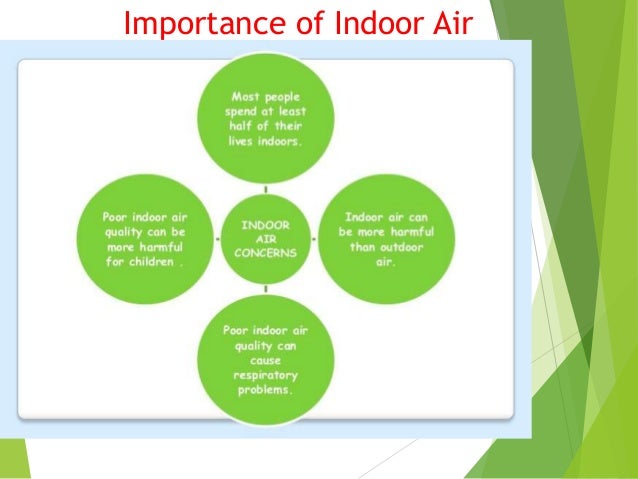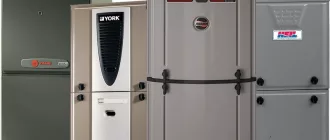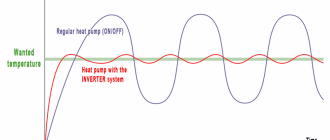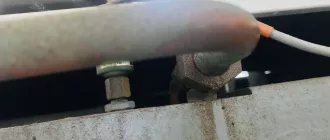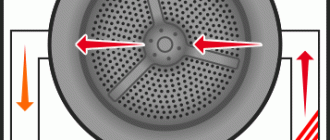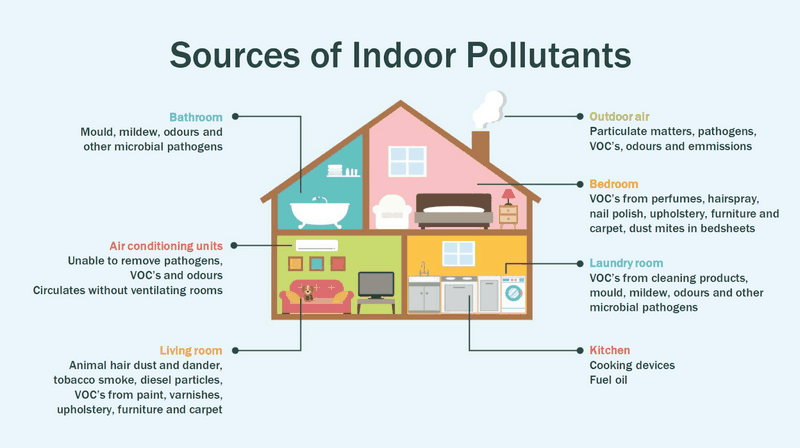
The Importance of Indoor Air Quality
Indoor air quality plays a crucial role in our overall health and well-being. As we spend a significant amount of time indoors, the air we breathe can have a profound impact on our respiratory system and overall quality of life. Poor indoor air quality can lead to a range of health problems, including allergies, respiratory infections, and even more serious conditions such as asthma and lung cancer.
Ventilation is a key factor in maintaining good indoor air quality. Proper ventilation helps to remove pollutants and allergens from the air, ensuring a fresh and clean breathing environment. Without adequate ventilation, indoor pollutants can accumulate, leading to a build-up of harmful substances and compromising the air we breathe.
Air pollution, both indoor and outdoor, is a major concern for public health. Indoor air can be up to five times more polluted than outdoor air, due to factors such as dust, pet dander, mold spores, and volatile organic compounds (VOCs) released by common household products. To improve indoor air quality, it is essential to implement strategies for air purification and filtration.
There are various methods to improve indoor air quality, ranging from simple steps to more advanced solutions. Regularly cleaning and vacuuming your home, as well as keeping it well-ventilated, are fundamental ways to remove dust and allergens from the air. Additionally, using air purifiers and filters can significantly reduce the concentration of pollutants and improve the overall quality of the air you breathe.
In conclusion, indoor air quality directly affects our health and well-being. Taking steps to improve indoor air quality, such as proper ventilation and air purification, is essential for maintaining a healthy living environment. By prioritizing indoor air quality, we can create a safer and cleaner space for ourselves and our loved ones to thrive and breathe easily.
Understanding Indoor Air Quality
Indoor air quality refers to the levels of pollution and purification present in the air inside a building or enclosed space. It directly affects our health as we spend a significant amount of time indoors, breathing in the air that surrounds us.
Poor indoor air quality can lead to a range of health problems, including respiratory issues, allergies, and asthma. It can also contribute to the development of more severe conditions such as lung cancer or cardiovascular disease.
In order to maintain good indoor air quality, it is important to identify and address potential sources of pollution. These can include outdoor pollutants that enter the building through open windows or air conditioning systems, as well as indoor sources such as tobacco smoke, cleaning products, and mold.
Air purification systems can help improve indoor air quality by filtering out harmful particles and pollutants. These systems work by capturing and removing contaminants, ensuring that the air we breathe is cleaner and healthier.
The importance of indoor air quality cannot be overstated. By ensuring that the air we breathe is of high quality, we can improve our overall health and well-being. Regular maintenance of ventilation systems, regular cleaning, and the use of air purifiers can all contribute to improved indoor air quality.
Effects of Poor Indoor Air Quality
Poor indoor air quality can have a significant impact on our health and well-being. Breathing in polluted air can lead to various respiratory problems, allergies, and even more serious health issues.
The importance of indoor air quality cannot be overstated. It affects everyone, from young children to the elderly. Poor air quality can worsen existing health conditions such as asthma and allergies, as well as lead to the development of new ones.
Indoor air pollution can come from a variety of sources, including dust, pet dander, pollen, tobacco smoke, and harmful chemicals emitted from cleaning products and furniture. Without proper ventilation and air purification systems, these pollutants can accumulate in our indoor spaces and significantly decrease the quality of the air we breathe.
To improve indoor air quality, air purification systems can be installed to remove harmful particles from the air. Additionally, regular cleaning and dusting can help reduce the levels of allergens and pollutants in our homes and workplaces.
| – Increased risk of respiratory problems |
| – Aggravation of asthma and allergies |
| – Development of new health conditions |
| – Accumulation of dust, pet dander, and pollen |
| – Exposure to harmful chemicals |
It is essential for our overall health and well-being to prioritize indoor air quality and take steps to improve it. By doing so, we can create a healthier and more comfortable environment for ourselves and those around us.
Health Risks Associated with Indoor Air Pollution
Indoor air pollution poses significant health risks due to the negative impact it can have on our respiratory systems. Breathing in polluted air can cause a range of health issues, from minor discomfort to severe respiratory conditions.
Poor air quality indoors can lead to increased risks of asthma, allergies, and other respiratory diseases. For individuals who already suffer from these conditions, exposure to indoor air pollution can worsen their symptoms and lead to more frequent and severe attacks. Children, the elderly, and individuals with compromised immune systems are particularly vulnerable to the health risks associated with indoor air pollution.
Indoor air pollution can be caused by various sources such as volatile organic compounds (VOCs) emitted from construction materials, furniture, and household cleaning products. Other factors include mold, pet dander, smoke from tobacco products, cooking fumes, and inadequate ventilation.
To minimize the health risks associated with indoor air pollution, it is essential to prioritize improving indoor air quality. Regularly cleaning and dusting surfaces can help reduce the presence of allergens and pollutants. Using air purifiers and ensuring proper ventilation can also aid in removing pollutants from the air we breathe.
Furthermore, it is crucial to be mindful of the products we bring into our indoor spaces. Opting for low or no VOC products, using natural cleaning solutions, and properly maintaining ventilation systems can greatly contribute to improving indoor air quality and reducing health risks.
In conclusion, the importance of indoor air quality cannot be overstated. Recognizing the health risks associated with indoor air pollution is the first step towards taking necessary measures to ensure a safe and healthy indoor environment for ourselves and our loved ones.
The Role of Ventilation
One of the most important factors in ensuring good indoor air quality is proper ventilation. Ventilation is the process of exchanging stale air with fresh air, which helps to dilute and remove indoor air pollutants and maintain a healthy environment for breathing.
Poor ventilation can lead to a buildup of indoor air pollutants such as dust, mold, pet dander, and volatile organic compounds (VOCs). These pollutants can have a negative impact on air quality and pose risks to human health, causing symptoms such as allergies, asthma, respiratory issues, and other health problems.
A well-ventilated space allows for a constant supply of fresh air, reducing the concentration of pollutants and providing a healthier living or working environment. Ventilation systems can include natural methods such as opening windows and doors, as well as mechanical systems such as fans, exhaust systems, and air purifiers.
Proper ventilation not only helps to remove pollutants, but it also helps to control humidity levels, preventing the growth of mold and mildew, which can further deteriorate indoor air quality. It also helps to regulate temperature and reduce stuffiness, providing a more comfortable and pleasant indoor environment.
In addition to ensuring good air quality, ventilation also plays a role in energy efficiency by helping to circulate air and reducing the need for excessive heating or cooling. By improving ventilation, you can reduce the reliance on air conditioning systems and save on energy costs.
In summary, ventilation plays a crucial role in maintaining good indoor air quality. It helps to remove pollutants, control humidity levels, regulate temperature, and improve overall comfort and health. Investing in proper ventilation systems or adopting natural ventilation methods is of utmost importance for the well-being of individuals and the longevity of buildings.
Controlling Indoor Air Pollutants
Indoor air quality plays a crucial role in our overall health and well-being. Breathing in clean air is essential for good respiratory health, and poor indoor air quality can lead to a variety of health problems. One of the key factors in improving indoor air quality is controlling air pollutants.
Indoor air pollutants are substances that can be found in the air inside our homes or other indoor environments. These pollutants can come from various sources, such as cooking, cleaning products, tobacco smoke, and household materials. They can have negative effects on our health, causing respiratory issues, allergies, and even long-term health problems.
To maintain good indoor air quality, it is important to implement measures to control and reduce indoor air pollutants. One of the most effective ways to do this is by improving ventilation. Proper ventilation helps to remove pollutants from indoor spaces and bring in fresh air from outside. This can be achieved through the use of exhaust fans, opening windows, or using a whole-house ventilation system.
Another important step in controlling indoor air pollutants is to identify and reduce the use of products that release harmful chemicals. This includes cleaning products, air fresheners, and certain building materials. Choosing natural and environmentally friendly alternatives can greatly improve indoor air quality.
Regular cleaning and maintenance of your indoor environment is also essential in controlling air pollutants. Vacuuming, dusting, and keeping surfaces clean can help reduce the accumulation of dust, pollen, and other allergens. It is also crucial to address any leaks or moisture issues promptly, as they can lead to mold growth and the release of harmful spores into the air.
Lastly, it is vital to create a smoke-free environment to prevent the harmful effects of tobacco smoke. Secondhand smoke is a significant contributor to indoor air pollution and can cause numerous health problems, especially for children and individuals with respiratory conditions.
In conclusion, controlling indoor air pollutants is of utmost importance for maintaining good indoor air quality and protecting our health. Through proper ventilation, reducing the use of harmful products, regular cleaning, and creating a smoke-free environment, we can greatly improve the air we breathe indoors and promote a healthier living environment.
Common Indoor Air Pollutants
Air pollution is not limited to the outdoors. In fact, the air inside your home can be even more polluted than the air outside. Various factors contribute to indoor air pollution, resulting in poor air quality that can have a significant impact on your health. Understanding the common indoor air pollutants can help you take steps to improve indoor air quality.
1. Allergens: Allergens are substances that can trigger allergic reactions. Common indoor allergens include dust mites, pet dander, mold spores, and pollen. These allergens can cause respiratory issues, such as sneezing, coughing, and asthma attacks.
2. Volatile Organic Compounds (VOCs): VOCs are chemicals that can off-gas from various sources like household cleaning products, paints, and furniture. Breathing in high levels of VOCs can lead to headaches, dizziness, and even damage to the liver, kidneys, or central nervous system.
3. Tobacco Smoke: Secondhand smoke is a significant indoor air pollutant. Breathing in tobacco smoke increases the risk of respiratory infections, asthma, lung cancer, and other health problems.
4. Radon: Radon is a colorless and odorless gas that can seep into homes through cracks in the foundation. Prolonged exposure to high levels of radon can increase the risk of lung cancer.
5. Carbon Monoxide: Carbon monoxide is a poisonous gas produced by burning fuels such as gas, oil, and wood. Exposure to high levels of carbon monoxide can lead to headaches, dizziness, nausea, and even death.
Improving indoor air quality involves implementing effective air purification systems, proper ventilation, and eliminating or reducing the sources of indoor air pollution. Taking steps to minimize exposure to these common indoor air pollutants is crucial for maintaining good health and well-being in the long run.
How to Measure Indoor Air Quality
When it comes to breathing, the quality of the air we inhale is of utmost importance, especially in indoor environments. Indoor air pollution can have a significant impact on our health and well-being. To ensure that the air we breathe is clean and free from pollutants, it is essential to measure the indoor air quality.
There are several ways to measure indoor air quality. One common method is to use an air quality monitor. These monitors can detect and measure various pollutants such as particulate matter, volatile organic compounds (VOCs), carbon dioxide, and more. They provide real-time data on the air quality, allowing you to identify any potential issues.
Another method to measure indoor air quality is to conduct air sampling and analysis. This involves taking air samples from different areas of the indoor space and analyzing them in a laboratory to determine the presence and concentration of pollutants. This method provides more detailed information about the air quality and can help identify specific sources of pollution.
In addition to these methods, there are also DIY kits available that allow you to test the air quality yourself. These kits typically include test strips or devices that change color in the presence of certain pollutants. While not as accurate as professional methods, they can still provide useful information about the air quality in your home or office.
- Regularly monitoring the indoor air quality is crucial for maintaining a healthy and comfortable environment.
- Identifying any potential pollutants or sources of pollution can help you take the necessary steps to improve the air quality.
- Air purification systems can also be used to remove pollutants and improve indoor air quality.
In conclusion, measuring indoor air quality is essential for ensuring the health and well-being of individuals in indoor environments. By using air quality monitors, conducting air sampling and analysis, or using DIY kits, you can gain valuable insights into the quality of the air you breathe. Taking steps to improve indoor air quality, such as using air purification systems, is crucial for maintaining a clean and healthy living or working space.
Importance of Regular Air Duct Cleaning
When it comes to indoor air quality, regular air duct cleaning plays a crucial role. The air ducts in our homes and offices are responsible for circulating air throughout the space, ensuring proper ventilation and maintaining a healthy environment.
Over time, these air ducts can accumulate dust, dirt, mold, and other contaminants. This can lead to poor indoor air quality and the circulation of polluted air in our living and working spaces. Breathing in this polluted air can have a negative impact on our health, causing allergies, respiratory issues, and other health problems.
Regular air duct cleaning is important for several reasons. Firstly, it helps to remove the buildup of dust and dirt in the air ducts, improving overall indoor air quality. By removing these contaminants, we can breathe cleaner air and reduce the risk of respiratory problems.
Secondly, regular air duct cleaning also helps to prevent the growth of mold and mildew. Mold spores can easily grow in the damp and dark environment of the air ducts, especially in areas with high humidity levels. Breathing in these mold spores can be harmful to our health, causing allergic reactions and other respiratory issues.
Furthermore, regular air duct cleaning can also improve the efficiency of our HVAC (heating, ventilation, and air conditioning) systems. When the air ducts are clogged with dust and debris, the HVAC system has to work harder to circulate air, leading to increased energy consumption and higher utility bills. By keeping the air ducts clean, we can ensure that our HVAC systems are functioning optimally and save energy and money in the process.
In conclusion, regular air duct cleaning is of utmost importance for maintaining good indoor air quality and promoting a healthy living and working environment. By removing dust, dirt, mold, and other contaminants from the air ducts, we can breathe cleaner air and reduce the risk of respiratory problems. It also helps to prevent the growth of mold and improve the efficiency of our HVAC systems. Therefore, it is essential to prioritize regular air duct cleaning for the overall well-being and health of ourselves and our loved ones.
Role of HVAC Systems in Indoor Air Quality
Indoor air quality plays a crucial role in our overall health and well-being. Breathing in polluted air can lead to a range of health issues, such as allergies, asthma, respiratory infections, and even heart disease. Therefore, it is essential to ensure that the air we breathe indoors is of high quality.
HVAC (Heating, Ventilation, and Air Conditioning) systems play a significant role in maintaining good indoor air quality. These systems help to regulate temperature, humidity, and ventilation within a building, thus ensuring a comfortable and healthy environment for occupants.
Ventilation is a critical aspect of HVAC systems when it comes to air quality. It involves the exchange of indoor and outdoor air, which helps to remove pollutants and bring in fresh air. Proper ventilation is necessary to prevent the buildup of indoor air pollutants, such as volatile organic compounds (VOCs), carbon monoxide, and airborne particles.
HVAC systems with effective filtration mechanisms can also contribute to improving indoor air quality. High-quality air filters can capture and remove a variety of pollutants, including dust, pollen, mold spores, and pet dander. These filters help to keep the air clean and reduce the risk of respiratory issues and allergies.
In addition to ventilation and filtration, HVAC systems also play a role in controlling humidity levels. High humidity can promote the growth of mold and bacteria, which can worsen air quality and pose health risks. HVAC systems can help to regulate humidity levels and prevent excessive moisture buildup.
Regular maintenance of HVAC systems is crucial to ensure their optimal performance and effectiveness in maintaining indoor air quality. Filters should be replaced regularly, and air ducts should be cleaned to prevent the accumulation of dust and other contaminants. Proper maintenance helps to prevent the spread of pollutants and maintain a healthy indoor environment.
In conclusion, HVAC systems play a vital role in maintaining good indoor air quality. Proper ventilation, effective filtration, and humidity control are essential for ensuring a healthy breathing environment. Regular maintenance of HVAC systems is necessary to uphold the quality of the air we breathe indoors and to protect our overall health.
| ventilation | exchange of air |
| importance | significance |
| breathing | respiration |
| pollution | contamination |
| quality | high standard |
| air | atmosphere |
| indoor | inside |
| health | well-being |
Benefits of Air Purifiers
Air purifiers play a crucial role in improving indoor air quality and promoting better health. They are designed to remove pollutants and contaminants from the air, purifying it and making it safer to breathe.
One of the main benefits of air purifiers is their ability to filter out various types of pollution. These include common household pollutants such as dust, pet dander, pollen, and mold spores. By removing these particles from the air, air purifiers help reduce the risk of respiratory issues like allergies, asthma, and other respiratory conditions.
Furthermore, air purifiers are particularly beneficial for individuals with compromised immune systems or respiratory conditions. These devices can filter out bacteria, viruses, and other harmful pathogens, creating a healthier environment and reducing the likelihood of illness.
In addition to purification, air purifiers also enhance the overall indoor air quality. They can eliminate unpleasant odors caused by cooking, pets, or smoke, leaving the air fresher and more pleasant to breathe. This is especially important for individuals who suffer from sensitivities to certain smells or have respiratory conditions aggravated by strong odors.
Air purifiers can also contribute to better sleep quality. By removing airborne pollutants and allergens, they create a cleaner and healthier sleeping environment. This can help reduce snoring, congestion, and sneezing during the night, allowing for a more restful sleep and improved overall well-being.
Lastly, air purifiers can complement existing ventilation systems in homes or buildings. While ventilation helps circulate fresh air, it may not be able to eliminate all pollutants. Air purifiers work alongside ventilation to further improve the air quality by removing additional contaminants.
In conclusion, air purifiers offer numerous benefits for indoor air quality and health. Their purification capabilities, ability to remove pollutants and allergens, elimination of odors, improvement of sleep quality, and complementing ventilation systems make them a valuable addition to any space.
Humidity and Indoor Air Quality
Humidity plays a crucial role in maintaining good indoor air quality. When the air is excessively dry, it can lead to various issues, such as dry skin, irritation of the respiratory system, and damage to wooden furniture and other materials. On the other hand, when the air is too humid, it creates an environment prone to mold and mildew growth, which can cause allergies and respiratory problems.
To ensure optimal humidity levels and improve indoor air quality, it is important to have proper purification and ventilation systems in place. Purification systems such as air filters can help remove dust, allergens, and other pollutants from the air, making it safer and cleaner to breathe. Ventilation systems, on the other hand, help circulate fresh air and remove stale air, reducing the concentration of indoor pollutants.
Humidity control is especially important for individuals with pre-existing health conditions, such as asthma or allergies. High humidity levels can exacerbate symptoms and trigger asthma attacks, while low humidity can lead to dryness and irritation of the airways. Therefore, maintaining an optimal humidity level is crucial for ensuring the health and well-being of occupants.
| Prevents mold and mildew growth | Increased risk of allergies and respiratory problems | Dryness and irritation of the respiratory system |
| Preserves the quality of wooden furniture and other materials | Condensation on windows and walls | Dry skin and cracked lips |
| Reduces the spread of airborne viruses and bacteria | Unpleasant odors | Increased risk of infection |
In conclusion, maintaining proper humidity levels is essential for ensuring good indoor air quality. By investing in purification and ventilation systems, individuals can create a healthier environment for breathing and promote overall well-being.
Allergies and Indoor Air Quality
Poor indoor air quality can have a significant impact on individuals with allergies. Allergies are a common health issue that affects many people worldwide. It is important to understand the link between indoor air quality and allergies to take appropriate measures to improve the air we breathe.
Allergies occur when the immune system reacts to substances, known as allergens, that are usually harmless to others. Common indoor allergens include dust mites, pet dander, mold spores, and pollen. These allergens can be present in the air we breathe inside our homes and can trigger allergic reactions in sensitive individuals.
Improving indoor air quality is crucial for individuals with allergies as it helps to reduce the exposure to allergens. One effective way to improve indoor air quality is through air purification. Air purifiers remove pollutants from the air, including allergens, providing cleaner and healthier air to breathe.
In addition to air purification, proper ventilation is also essential for maintaining good indoor air quality. Ventilation allows fresh air to enter the indoor space and removes stale air, which can contain allergens and other pollutants. This exchange of air helps to dilute the concentration of allergens and improve the overall air quality.
Regular cleaning and dusting also play a significant role in reducing allergens in the indoor environment. Vacuuming carpets, cleaning surfaces, and washing bedding can help to remove dust mites, pet dander, and other allergens that may accumulate over time.
It is important to note that individuals with allergies should also consult a healthcare professional for personalized advice and treatment options.
In conclusion, the importance of indoor air quality cannot be overstated, especially for individuals with allergies. Taking steps to improve indoor air quality through air purification, ventilation, and regular cleaning can help reduce exposure to allergens, leading to improved respiratory health and overall well-being.
Mold Remediation and Prevention
Mold is a common indoor air quality issue that can have significant impacts on both the quality of the air you breathe and your overall health. Mold is a type of fungus that grows in damp environments and can release spores into the air, which can lead to respiratory problems, allergies, and other health issues. Therefore, it is crucial to address mold infestations promptly and take steps to prevent its growth in the first place.
To remediate mold in your indoor space, it is essential to first identify the source of moisture or dampness. This could be due to leaks, high humidity levels, or faulty ventilation. Once the source is identified, it is crucial to fix it to prevent further mold growth. Additionally, removing any affected materials, such as drywall or carpet, may be necessary to eliminate the mold completely.
In order to prevent mold from growing in your indoor environment, there are several steps you can take. Proper ventilation is essential to reduce moisture buildup. Make sure that your bathrooms, kitchens, and laundry rooms are properly ventilated with exhaust fans that expel humid air outside. Additionally, using dehumidifiers can help to keep the humidity levels in your home below 50%, which is the optimal range for preventing mold growth.
Air purification and filtration systems can also be effective in improving indoor air quality and preventing mold. These systems can remove pollutants, including mold spores, from the air, thereby reducing the risk of respiratory issues. Regularly cleaning and replacing air filters is crucial to ensure that they are functioning correctly.
In conclusion, mold can significantly impact the air quality in your indoor space, leading to various health problems. Addressing mold infestations promptly and taking preventative measures is key to maintaining good indoor air quality. By addressing the source of moisture, improving ventilation, and implementing air purification measures, you can create a healthier environment for breathing and reduce the risk of mold growth in your home.
Q&A:
Why is indoor air quality important?
Indoor air quality is important because the air we breathe indoors can have a significant impact on our health. Poor air quality can lead to respiratory problems, allergies, and other health issues. It is especially important to maintain good air quality in our homes and workplaces where we spend a significant amount of time.
How does poor indoor air quality affect our health?
Poor indoor air quality can have various negative effects on our health. It can cause or worsen respiratory problems such as asthma and allergies. It can also lead to symptoms like coughing, wheezing, headaches, and fatigue. Long-term exposure to poor air quality can even increase the risk of heart disease and cancer.
What factors contribute to poor indoor air quality?
There are several factors that can contribute to poor indoor air quality. These include inadequate ventilation, high humidity levels, tobacco smoke, chemicals and pollutants from cleaning products, building materials, and outdoor sources like pollen and pollution. Poorly maintained heating, ventilation, and air conditioning (HVAC) systems can also contribute to poor air quality.
How can we improve indoor air quality?
There are several ways to improve indoor air quality. Ensuring proper ventilation by opening windows and using exhaust fans can help to circulate fresh air. Regularly cleaning and dusting your home can remove allergens and pollutants. Avoiding smoking indoors and using natural cleaning products can also make a significant difference. Additionally, using air purifiers and maintaining your HVAC system can help improve air quality.

